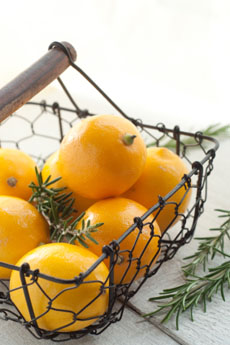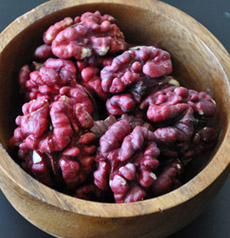|
Walnuts have long been cultivated, with evidence dating back to about 7000 B.C.E. The species is native to the mountain ranges of Central Asia: western China, parts of Kazakhstan, Uzbekistan and southern Kirghizia to Nepal, Bhutan, Tibet, northern India and Pakistan, Afghanistan, Turkmenistan, Iran and portions of Azerbaijan, Armenia, Georgia and eastern Turkey.
The Romans called walnuts Juglans regia, “Jupiter’s royal acorn,” which in modern taxonomy became the genus and species of the tree.
In ancient Persia, walnuts were reserved for royalty. Thus, the walnut was often known as the Persian walnut. English merchant marines traded walnuts in ports around the world, and the nuts became known as English walnuts. (Walnuts were not grown commercially in England.)
Walnuts were cultivated in California by the Franciscan fathers in the late 1700s, and were known as “mission” walnuts. By the 1870s modern walnut production had become a commercial enterprise.
|
|
|
Brie with red walnuts, candied kumquats and honey. Photo courtesy CookStyleShootEat.com.
|
Today, California walnuts account for 99% of U.S. walnut production and 75% of the world’s walnuts. The annual harvest takes place in October.
GET YOUR RED WALNUTS
STORES: There are only a limited quantity of red walnuts from California. This year, they are being sold at retail in California, New York City/Metro (including Fresh Direct) and Texas.
ONLINE: Order red walnuts online from ShaskyFarms.com.
TREES: If walnut trees grow in your area, you can plant trees and harvest your own—in about eight years.
|




